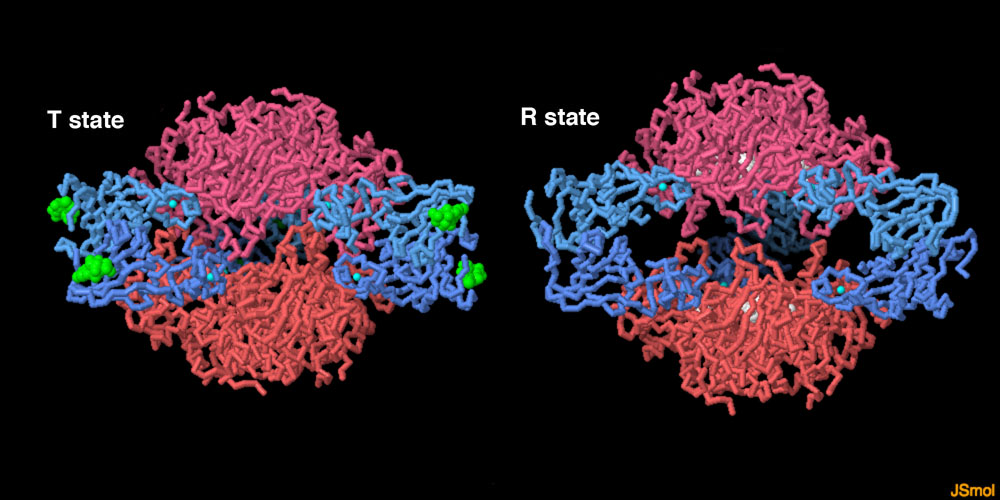
You will already have studied simple single site enzymes and have analysed their steady state kinetic behaviour in terms of a model in which an enzyme/substrate complex forms and the substrate is transformed in the active site to yield the product. This model gives directly Michaelis Menten kinetics. This module will begin by considering the steady state kinetic mechanisms of some two-substrate enzymes. We will take a close look at the mechanism of the large class of enzymes termed dehydrogenases and how kinetic measurements and structural investigations enable plausible mechanisms to be deduced.
We also wish to examine more complex systems that comprise many sites which interact through linked protein conformational changes; Allosteric systems. Such systems lead to cooperativity in which initial binding of substrate leads to enhanced (or diminished) binding of further substrate. In this module we will examine such systems and enquire how these effects are produced and what are the biochemical and physiological benefits to the organism of both positive and negative cooperativity. The mechanisms through which allosteric effectors modulate the behaviour of allosteric proteins will be examined and their role in controlling protein action studied. Now that high-resolution structures are available we are able to understand how some of these systems function at the molecular level and a number of examples will be chosen to illustrate the molecular basis of allostery.
Learning Outcomes:
To pass this module students will need to be able to:
1. discuss models (mathematical and structural) of enzyme activity, the mechanisms of allostery and the experimental basis on which the various models of allostery may be distinguished;
2. discuss the mechanism of action of the dehydrogenases and the steady state mechanisms of multi-site enzymes;
3. use key skills, particularly those related to mathematical modelling in the analysis of experimental data.
- Module Supervisor: Jonathan Worrall